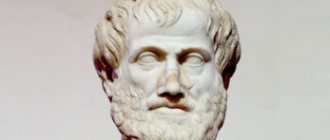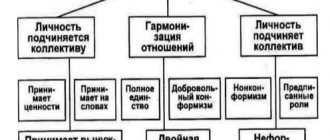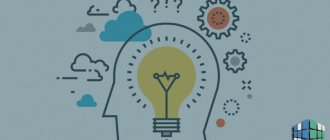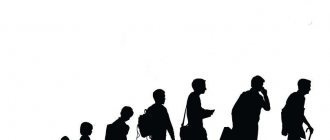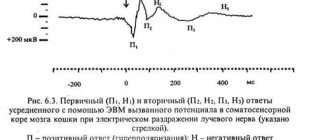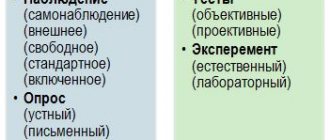Cognitive activity - what is it?
Cognitive activity is the process of assimilation and improvement of knowledge, its continuous increase and development.
This type of activity is inherent only to humans, and belongs to the highest form of mental cognition. It represents a symbiosis of sensory perception, theoretical awareness and practical actions. Accompanying all types of activities, it only at the moment of training acquires a clear, pronounced form and becomes conscious.
The basis of cognitive activity is the process of cognition, as the mental processing and mediation of information, ensuring the acquisition and accumulation of knowledge.
The process of cognition is one of the three processes that make up human consciousness, along with experience and reflection. It is realized through such mental processes as:
- attention;
- memory;
- thinking;
- speech;
- perception;
- sensation;
- performance;
- imagination.
To implement it, the following components are required:
- object (information, knowledge);
- subject (receiving knowledge - cognizing);
- cause-and-effect relationship between subject and object (why it is necessary to acquire this knowledge).
The result of such influence is the acquired knowledge as the fourth component of this process. Knowledge may be true or false, but it is still the result of knowledge.
Forms of knowledge
Cognition is divided into scientific and non-scientific, while non-scientific cognitive activity includes everyday, artistic, mythological and religious forms. Let us briefly describe each of them, and then consider scientific knowledge in more detail.
- Scientific knowledge is the scientifically based acquisition of objective knowledge that reflects the laws according to which the surrounding reality develops and functions. This form combines description, explanation and prediction of various processes observed and noted by researchers as knowledge accumulates.
- The essence of the ordinary form comes down to obtaining knowledge through observation of a phenomenon. The information received is a collection of various data that cannot be combined into a single system. The purpose of such cognitive activity is to apply the acquired knowledge in practice.
- Artistic (or creative) cognition is a way of reflecting reality with the help of artistic symbols and images.
- The philosophical form of cognitive activity is formed around the desire of scientists to find reasonable and logical explanations for the phenomena occurring in our world, while simultaneously determining the place of man in the surrounding reality.
- The religious form of knowledge is referred to as self-knowledge; with its help, an individual studies religious moral foundations, and also knows God.
- Mythological knowledge was characteristic of primitive society; with its help, people could explain phenomena they did not understand by the intervention of higher powers.
- Self-knowledge is the process of a person recognizing himself, his personal qualities, properties and characteristics. The main methods of self-knowledge include introspection, comparative analysis carried out by an individual when comparing himself with others, a person’s observation of himself and his own behavior, etc.
Sensory and rational cognition
At the moment of assimilation of knowledge, each person uses a certain structure, the same for all people . It is based on the senses, as structural elements of cognitive abilities, identically involved, dictating the general laws of cognition.
The knowledge of each person includes 2 steps:
- sensory (empirical) – considering sensations, perceptions and ideas as the main form of genuine comprehension. This is the case when a person himself understands what is happening;
- rational - considering reason as the support, source and main measure of the reliability and infallibility of human aspirations. In this situation, a person not only understands, but is also able to explain and even prove what he understands to another.
Sensory cognition includes three multi-level forms, established from lower to higher:
- sensation;
- perception;
- performance.
Sensations are primary information about objects obtained with the help of analyzers; they are also the most primitive and do not reflect the integrity of the object:
- color;
- smell;
- taste;
- tactile sensations.
Perception is already a combination of several sensations and a more complex form of sensory acquisition. Fragmentary sensations merge into a holistically defined image. There is a separation of one object from another. Through perception, an adequate recognition of an object and the relationship of its images are achieved.
Representation is a transitional link between sensory and rational comprehension, containing sensory and rational elements of study. Its specific feature is the separation of the image from the object: the ability to represent the object in its absence. The ability to mentally operate an object without direct contact with it. In other words: use imagination and fantasy in relation to the object.
The prerequisites for rationality are:
- separation of thought from the subject;
- thinking as the completion of the generalization process, the formation of abstract concepts: matter, mass, time, space.
Rational cognition as a thinking process includes 3 forms of one-level order:
- concept;
- judgment;
- inference.
However, such a process is not feasible without such specific techniques of abstract logical thinking as:
- comparison;
- analysis;
- synthesis;
- induction;
- deduction;
- idealization;
- abstraction.
Thanks to them, conclusions are drawn. By comparing, analyzing and synthesizing the data obtained, a person forms his own conclusions. Comparison is the main method of mental activity.
Both stages are in organic unity, interconnection and interpenetration, passing into one another like a diffuse phenomenon. The system of human analyzers, as a stage of sensory development, is created for the perception of sensations, and rational thinking is created for forming conclusions based on the information received. This allows us to obtain the most objective conclusions while constantly pursuing the main goal of knowledge - the search for truth.
How to write a term paper on speech therapy
07.09.2010 244944
These guidelines are compiled to help students gain an understanding of the content and structure of coursework in speech therapy.
Logopedia of pedagogical science that studies anomalies of speech development with normal hearing, explores the manifestations, nature and mechanisms of speech disorders, develops the scientific basis for overcoming and preventing them means of special training and education.
The subject of speech therapy as a science is speech disorders and the process of training and education of persons with speech disorders.
The object of study is a person suffering from a speech disorder.
The main task of speech therapy as a science is the study, prevention and elimination of various types of speech disorders.
Coursework in speech therapy is a student's scientific and experimental research. This type of educational activity, provided for by the educational and professional program and curriculum, contributes to the acquisition of skills in working with literature, analyzing and summarizing literary sources in order to determine the range of insufficiently studied problems, determining the content and methods of experimental research, processing skills and qualitative analysis of the results obtained. The need to complete coursework in speech therapy is due to the updating of knowledge concerning the content, organization, principles, methods and techniques of speech therapy work.
As a rule, during their studies, students must write two term papers - theoretical and practical.
The first course work should be devoted to the analysis and synthesis of general and specialized literature on the chosen topic. Based on this analysis, it is necessary to justify and develop a method of ascertaining (diagnostic) experiment.
In the second course work, it is necessary to provide an analysis of the results obtained during the ascertaining experiment, as well as determine the directions and content of speech therapy work, and select adequate methods and techniques of correction.
So, let’s present the general requirements for the content and design of coursework in speech therapy.
The initial and most important stage of working on a course project is the choice of a topic, which is either proposed by the supervisor or chosen by the student independently from a list of topics that are consistent with the areas of scientific research of the department.
Each topic can be modified, considered in different aspects, but taking into account a theoretical and practical approach. Having chosen a topic, the student needs to think through in detail its specific content, areas of work, practical material, etc., which should be reflected both in the formulation of the topic and in the further construction of the study. It should be recalled that the chosen topic may not only have a purely theoretical orientation, for example: “Dysarthria. Characteristics of the defect”, “Classification of dysgraphia”, but also take into account the practical significance of the problem under consideration, for example: “Speech therapy work on speech correction for dysarthria”. It should also be taken into account that when formulating a topic, excessive detail should be avoided, for example: “Formation of prosodic components of speech in preschoolers of the sixth year of life attending a preschool institution for children with severe speech impairments.”
The course work includes such mandatory parts as: introduction, three chapters, conclusion, bibliography and appendix.
The text of the term paper begins with the title page . An example of its design can be seen here.
Then the content of the work is given, in which the names of chapters, paragraphs, and sections are formulated in strict accordance with the content of the thesis. An example of its design can be seen here.
In the text, each subsequent chapter and paragraph begins on a new page. At the end of each chapter, the materials are summarized and conclusions are formulated.
The introduction reveals the relevance of the problem under consideration in general and the topic being studied in particular; the problem, subject, object, and purpose of the study are defined. In accordance with the goal and hypothesis, objectives and a set of research methods aimed at achieving the objectives must be defined.
The relevance of the topic lies in reflecting the current level of pedagogical science and practice, meeting the requirements of novelty and usefulness.
When defining the research problem, it is important to indicate what practical tasks it will help to implement in training and educating people with speech pathology.
The object of research is understood as certain aspects of pedagogical reality, perceived through a system of theoretical and practical knowledge. The ultimate goal of any research is to improve this object.
The subject of research is some part, property, element of an object, i.e. the subject of research always indicates a specific aspect of the object that is to be studied and about which the researcher wants to gain new knowledge. An object is a part of an object.
You can give an example of the formulation of the object, subject and problem of research:
– The object of the study is the speech activity of preschool children with phonetic-phonemic speech disorders.
– The subject of the study is the features of intonation speech of children with phonetic-phonemic speech disorders.
– The research problem is to determine effective directions for speech therapy work on the formation of intonation expressiveness of speech in the system of correctional intervention.
The purpose of the study contributes to the specification of the object being studied. The goal of any research is to solve a specific problem. The goal is specified in tasks taking into account the subject of research.
The research objectives are formulated in a certain sequence, which determines the logic of the research. The research objectives are set on the basis of a theoretical analysis of the problem and an assessment of the state of its solution in practice.
The first chapter is an analysis of literary sources, which examines the state of this problem in historical and modern aspects, and presents the most important theoretical principles that formed the basis of the study.
When writing the first chapter, you should pay attention to the fact that the text of the course work must be written in a scientific style. When presenting scientific material, it is necessary to comply with the following requirements:
– Specificity – a review of only those sources that are necessary to disclose only a given topic or solve only a given problem;
– Clarity – which is characterized by semantic coherence and integrity of individual parts of the text;
– Logicality – which provides for a certain structure of presentation of the material;
– Reasoning – evidence of thoughts (why this and not otherwise);
– Precision of wording, excluding ambiguous interpretation of the authors’ statements.
A literary review of the state of the problem being studied should not be reduced to a consistent presentation of literary sources. It should present a generalized description of the literature: highlight the main directions (currents, concepts, points of view), analyze in detail and evaluate the most fundamental works of representatives of these directions.
When writing a work, the student must correctly use literary materials, make references to the authors and sources from which the results of scientific research are borrowed. Failure to provide required references will reduce your coursework grade.
As a rule, in coursework on speech therapy, references to literary sources are formatted as follows: the number of the cited source in the general list of references is placed in square brackets. For example: General speech underdevelopment is a speech pathology in which there is a persistent lag in the formation of all components of the language system: phonetics, vocabulary and grammar [17].
When using quotations, in square brackets, in addition to indicating the source number, the page number from which this excerpt is taken is indicated, for example: Speech rhythm is based on a physiological and intellectual basis, since, firstly, it is directly related to the rhythm of breathing. Secondly, being an element that performs a communicative function, “correlates with meaning, i.e. controlled intellectually” [23, P.40].
However, course work should not be of a purely abstract nature, so you should not abuse the unreasonable abundance of citations. Quoting should be logically justified, convincing and used only when really necessary.
In the second chapter , devoted to experimental research, the organization should be described and the program of the ascertaining experiment should be presented. The survey methodology, as a rule, consists of a description of several series of tasks, with detailed instructions, visual and lexical material, the procedure for completing tasks by experiment participants, and scoring criteria. This chapter also provides a qualitative and quantitative analysis of the results obtained.
When analyzing the results of an experiment, it is necessary to use a scoring system. Examples of various criteria for quantitative and qualitative assessment are presented in the following works:
– Glukhov V.P. Formation of coherent speech in preschool children with general speech underdevelopment. - M.: Arkti, 2002. - 144 p.
– Fotekova T.A. Test methodology for diagnosing oral speech of primary schoolchildren. - M.: Arkti, 2000. - 56 p.
– Levchenko I.Yu. Pathopsychology: Theory and practice. - M.: Academy, 2000. - 232 p.
In order to visually present the results obtained during the experimental study, it is recommended to use tables, graphs, diagrams, etc. Histograms can be used in a variety of ways - columnar, cylindrical, planar, volumetric, etc. An example of the design of tables, figures, and histograms can be found here.
The third chapter provides a rationale for the proposed methods and techniques and reveals the content of the main stages of correctional work.
The conclusion contains a summary of the material presented and the main conclusions formulated by the author.
The bibliography must contain at least 25 sources. The list includes bibliographic information about the sources used in preparing the work. An example of its design can be seen here.
In the application you can present bulky tables or illustrations, examination protocols, observation records, products of activity (drawings, written works of children), notes from speech therapy classes, etc.
The volume of one course work must be at least 30 pages of typewritten text.
In general, coursework in speech therapy is the basis for a future thesis, in which the study of the begun problem can be continued, but from the standpoint of a different approach or a comparative analysis of the disorders being studied in different age categories of people with different types of speech disorders.
The content and format of theses in speech therapy can be found here.
Literature:
1. How to write a term paper on speech therapy: Methodological recommendations. Educational and methodological manual / Comp. Artemova E.E., Tishina L.A. / Ed. Orlova O.S. – M.: MGOPU, 2008. – 35 p.
2. Research work of students in the system of higher professional pedagogical education (specialty 031800 - Speech therapy). Methodological recommendations for completing the thesis / Compiled by. L.V. Lopatina, V.I. Lipakova, G.G. Golubeva. - St. Petersburg: Publishing house of the Russian State Pedagogical University named after. A. I. Herzen, 2002. - 140 p.
Objectives and motives
Cognitive activity presupposes that the individual must be aware of the means and methods of purposeful activity used. Cognition can be carried out by an individual subject or a collective group with certain methods of communication.
When implementing the cognitive function, the following tasks are solved:
- Creating conditions for the individual’s cognitive capabilities. Cognition begins with adapting tasks and forms of activity, providing freedom of choice and the possibility of group work.
- Formation of the subjective component. Cognitive motives are formed, the emotional and volitional spheres of a person develop, as well as his reflexive skills.
- Formation of the operational component. Conditions are created for the maximum expansion of methods and experience of cognition.
A significant role in cognitive activity is assigned to factors that influence it. They need to be identified in order to ensure qualitative transformations of cognition.
In pedagogy, there are 5 levels of cognitive interest, which depend on the degree of their severity:
- Subjective-search. It is distinguished by the realized age-related potential for developing the student’s desire to learn new things.
- Productive search. It is characterized by an unstable and episodic emergence of interest, which is supported by the efforts of adults.
- Inactive (or reproductive). The individual has no interest in learning due to lack of creative expression. The search activity itself is supported and corrected by adults.
- Elementary. The student’s interest is observed only formally, but there is no specification and subordination to the task at hand.
The fifth level is characterized by a complete lack of student interest. In this case, the child has no desire to solve the assigned tasks, which usually become the reasons that force the individual to act.
Functions of cognition
Cognition has two most important functions for society and each individual person. The first of them is the formation in the individual, through cognitive activity, of his own worldview, as well as strategies and principles for interacting with other people and the world. Thanks to this, people were able not only to adapt to the conditions of their environment, but also began to transform it.
The second key function of cognition is to form in a person, in the process of cognitive activity, a critical approach to his own personality , which over time becomes the most important condition for the individual’s self-development, his formation and self-improvement. And the forward movement of individual people gradually sets the whole society in motion.
Levels of scientific knowledge
Experts distinguish empirical and theoretical levels of scientific knowledge.
The empirical (or experimental) level ensures the work of researchers to identify objective facts and their inherent hidden connections and relationships between phenomena and things in the surrounding reality. The subject at this level receives a correct description of the processes and phenomena that interest him. Methods of empirical cognitive activity include scientific observations and experiments.
Read more about empirical cognition in this article.
At the theoretical (or rational) level of scientific and cognitive activity, the internal connections that have developed between various objects and phenomena are revealed. It is at this level that scientists put forward hypotheses and theories; the main methods of the rational level include idealization, abstraction, analogy, analysis and synthesis, deduction and induction. In practice, both levels described above are closely related to each other; they constantly complement each other.
Forms of the scientific-cognitive process
The main forms of scientific knowledge are:
- Scientific facts are reflections of real facts from the surrounding reality in the human mind. Scientific facts can be subject to verification - a special test designed to prove their truth;
- Empirical laws , which are generalizations of empirical ones, i.e. facts taken from practical experience that make it possible to identify connections between processes and phenomena of the surrounding reality;
- Problems are theoretical or practical questions that arise for researchers during the cognitive process and require substantiated answers;
- Hypotheses are assumptions formed on the basis of scientific facts that explain a phenomenon or process. Often hypotheses require proof of their truth and scientific testing;
- Theories are the most complete forms of scientific knowledge about a certain subject, phenomenon or process. The theory is formed on the basis of a proven and tested hypothesis, representing a complex that includes ideas, principles and provisions that provide people with the most complete picture of the world around them.
Methods of scientific knowledge
The main methods of scientific and educational activity include:
- Scientific observations , i.e. organized and purposeful work on the researcher’s perception of things and phenomena with obtaining objective information about them;
- Experiments are studies of certain phenomena in specialized, artificially created conditions. They are produced to test already put forward hypotheses and theories or to collect data necessary to begin a scientific search;
- Analysis promotes the mental or real decomposition of a specific thing into its constituent elements for their detailed study;
- Synthesis is the opposite of analysis; with its help, scientists combine the various constituent elements of a certain subject to identify connections between them as part of a holistic thing;
- Simulation is designed to reproduce the characteristics of a specific item using another item created specifically for that purpose;
- The analogy method consists in the researcher putting forward an assumption about the similarity of two externally different things due to the similarity of some properties and characteristics of these things;
- Abstraction is based on mental abstraction from the list of properties of an object in order to understand the essence of one, the most important property of the specified object for research;
- Formalization displays the results of the cognitive process using formulas, concepts and statements;
- Idealization is intended to help the researcher mentally create an abstract object that does not exist in reality, but is necessary for research;
- Mathematization helps to express the properties of the object under study in a numerical way through the use of a variety of measurement methods;
- Deduction allows scientists to draw conclusions by moving from the general to the specific;
- Induction , on the contrary, is based on conclusions drawn from the particular to the general.
Scientific knowledge
So, scientific knowledge is one of the varieties of cognitive activity aimed at identifying the essence of things and phenomena of the surrounding reality, at discovering connections between them, as well as the laws that determine their development. The result of this type of activity is a formed system of knowledge about nature, people and society, with the ability to describe, explain and predict further developments of events. The subject of such research can be any object or phenomenon, for example, society, the state, a separate natural process, human economic activity, patterns of functioning of the human psyche, etc. Its key features include:
- the truth and objectivity of the acquired knowledge;
- obtaining information is accompanied by the use of special methods characteristic of scientific activity;
- the researcher has the opportunity to test the knowledge he has acquired;
- The study is characterized by a high degree of theoretical generality.
